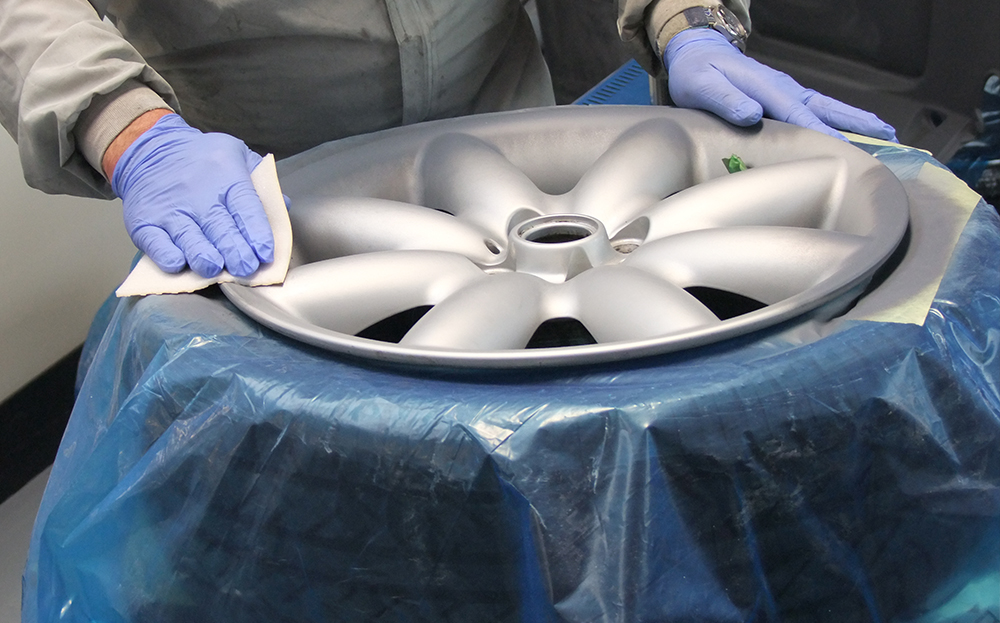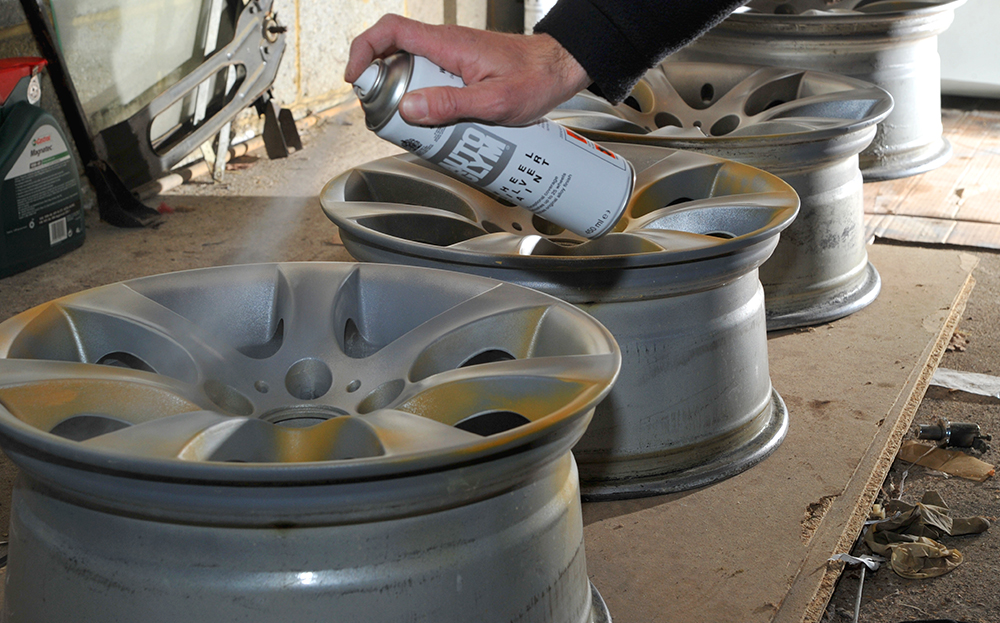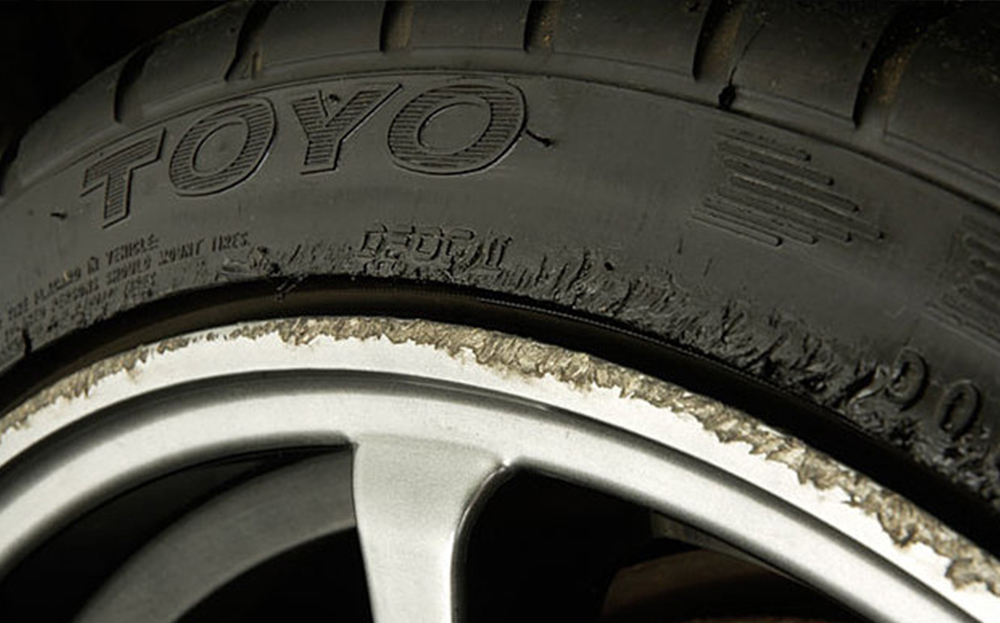How to repair alloy wheel damage
Claim victory in the kerb wars
High kerbs, careless driving, cavernous potholes… these and countless other perils are the enemies of alloy wheels, the most attractive thing about many cars.
“Shabby alloys really harm a car’s appearance and can make it harder to sell,” says Mark Norman at CAP, the used car valuation guide. “Buyers know a set of four damaged alloys can easily cost over £200 to repair [and then some]. It’s difficult to put a value on a good set of alloy wheels but a smart set won’t harm a car’s resale prospects, as well as making you feel better about owning it.”
If your wheels have taken a knock though, don’t panic: we’ve got everything you need to know about repairing alloy wheel damage. While repairing lightly damaged alloy wheels at home is a fairly simple and inexpensive job, if you feel it’s beyond your abilities or if the wheel is particularly badly damaged, you may need to call in the professionals.
DIY repairs: How to repair alloy wheels yourself
Everyone kerbs a wheel at some time. It’s possible to repair light damage with an over-the counter alloy wheel repair kit comprising sand papers, a filler, primer and paint. You may want to apply a lacquer on top, depending on the wheel’s finish.
Such kits demand a combination of patience, care and skill on the user’s part.
Photographer and YouTuber Matt Richardson bought four cheap-but-tatty used alloy wheels on eBay in order to make it easier to switch to cold weather tyres in winter. The wheels were quite badly marked and needed repairing, but since the whole idea was to save money, he was keen to do the job himself. Here, he explains the process:
1. Buy an alloy wheel repair kit and begin sanding
I bought a kit over the counter at a car maintenance store (view an example of an alloy wheel repair kit on Amazon). It included some sandpaper for removing damaged paint and flattening over the chips, but I used my own heavy grit sandpaper as I found it did a better job.
2. Wipe down and apply the putty
After sanding down I wiped off the dust. Then I mixed the putty, which was supplied with the kit, and filled over the dings until there was a level surface before leaving it to cure.
3. Sand down the filler
Sanding the filler flush with the alloy was the hardest job. Getting it as close as possible when you first apply it saves a lot of time later.

4. Wipe down, apply primer and check for imperfections
Another wipe, this time with a tack cloth to get all the dust off and then I gave a coat of etch primer (an acid-based undercoat, supplied with the kit) to give the silver paint a key and to highlight any imperfections I’d missed with the filler. There were a couple, so I refilled, sanded and primed until I was happy with the result.
5. Lightly sand again before applying light paint layers
A final rub down with very fine sandpaper, another wipe with the tack cloth as any dust might show through, and then I built up several light coats of alloy wheel paint (heavy coats tend to run) and left them to dry.

6. Apply lacquer
Finally, to get a finish closer to my car’s original finish, I sprayed on a coat of lacquer (also available over the counter) and once it was dry, I had a set of new-looking alloys ready for my winter tyres.
- Time taken 5 hours
- Cost of materials £25
Note: If your repair kit doesn’t contain a lacquer, you can choose to purchase it separately.
Alloy wheel refurbishment: When to call in the professionals
While a DIY repair such as Richardson’s is fine for mild damage, you’re probably looking at calling out a mobile wheel refurbishment company to repair anything more serious, such as a bent wheel, extensive kerbing, corrosion and fractures. While spot repairs are possible, it’s generally best to get the whole wheel refurbished to ensure a consistent finish across the whole surface.
For anything more serious, or if you have a premium car and expect your repaired wheels to look like new and be as well protected as the day they were forged and painted, you may have to consider the services of a business such as LKQ Coatings or Lepsons in Gillingham, Kent.
Lepsons repairs around 700 alloy wheels each week, of which 100-150 have been damaged by potholes.
“Most of our business is with the motor trade but just this morning, we’ve had five members of the public arrive with wheels bent by deep potholes,” said Andy Leppenwell, the general manager.
Typically, a deep pothole bends a wheel out of alignment, but it can also render it irreparable. A less serious impact that might distort the rim where it touches the tyre, can have equally serious consequences by causing a slow air leak that might not immediately be detected by the driver.
Lepson’s repair process is a little more intensive than a simple DIY job. The wheel is immersed in a chemical bath to expose the bare alloy. It’s checked for cracks, washed off and then primed. It’s rechecked, then painted and the wheel baked at 200deg F before, finally, being lacquered and baked again at 230deg F.
At the end of it all, Lepsons claims you have a set of wheels as good as the day they left the factory. Now all you’ve got to do is avoid kerbing them. And we all know how hard that is.
How much does alloy wheel repair cost?
If you choose to repair the damage yourself, you’ll need to buy yourself an alloy wheel repair kit that will set you back around £20-£30.
The price for professional repairs can vary depending on the level of work required, the size of the wheel and if the wheel has a diamond-cut finish. You can pay anywhere between £50 and £300 per corner, though you’ll likely save money if you can bring the wheel to the company’s workshop yourself and can do without same-day service. A fee of £80 to £100 per wheel is generally typical.
How long does it take to repair alloy wheels?
If you’re repairing your alloys yourself, you’ll want to set aside a morning or an afternoon to complete the job.
If you’ve opted to have them refurbished by professionals, it will depend on the company you choose and the condition of your alloys. Some will be able to get them back to you within 1-4 hours and others may take one working day or longer.
Where to buy alloy wheel repair kits
There are several places online and in-store that you can purchase alloy wheel repair kits, including:
How to clean alloy wheels
Once you’ve repaired your alloy wheels, you’ll likely want to keep them in tip-top condition. Read our guide on how to clean alloy wheels, and the best cleaning products to use here.
N.b. We may receive a small commission fee if you click on a link to an external website and purchase a product as a result, but these links are designed to make your life easier and it does not affect our editorial independence.
Related articles
- Enjoyed reading our guide to alloy wheel repair? Then you might also like our guide to keyless car theft prevention.
- Sales of new diesel and petrol cars will be banned from 2030. Here’s everything you need to know.
- Heading into London? Check if your car is exempt from the ULEZ here.
Latest articles
- Aston Martin Valkyrie AMR-LMH hypercar hits track ahead of 2025 Le Mans challenge
- Porsche has begun testing the electric Cayenne
- Cupra Leon 272 eHybrid 2024 review: Bigger battery, better tech … but is it a Cupra?
- Porsche 911 GTS 2024 review: Hybrid heresy or more Stuttgart genius?
- Extended test: 2023 Vauxhall Astra Sports Tourer GS PHEV
- Ford Capri revival has faced a lot of flak… but are buyers put off? Here’s what visitors to the Festival of Speed had to say
- F1 2024 calendar and race reports: What time the next grand prix starts and what happened in the previous rounds
- ‘No timeframe’ for how long Volvo’s returning estate cars will be on sale in UK
- Kia Picanto 2024 review: Updates add spice to cute Korean city car














